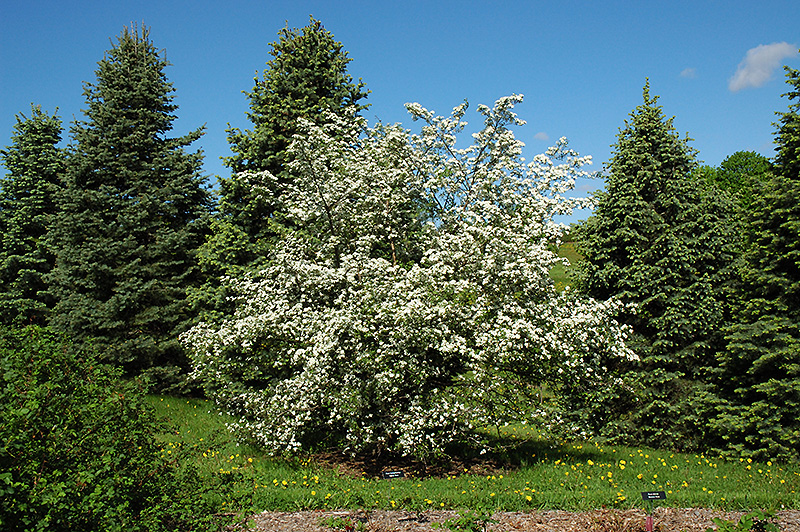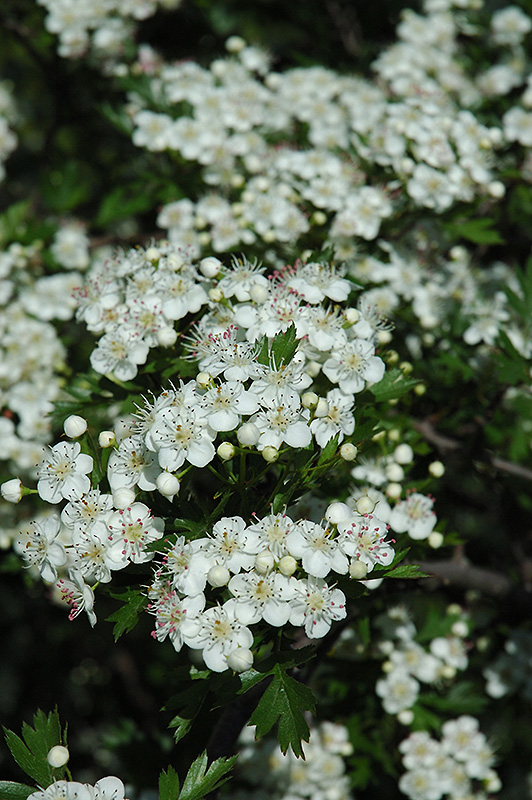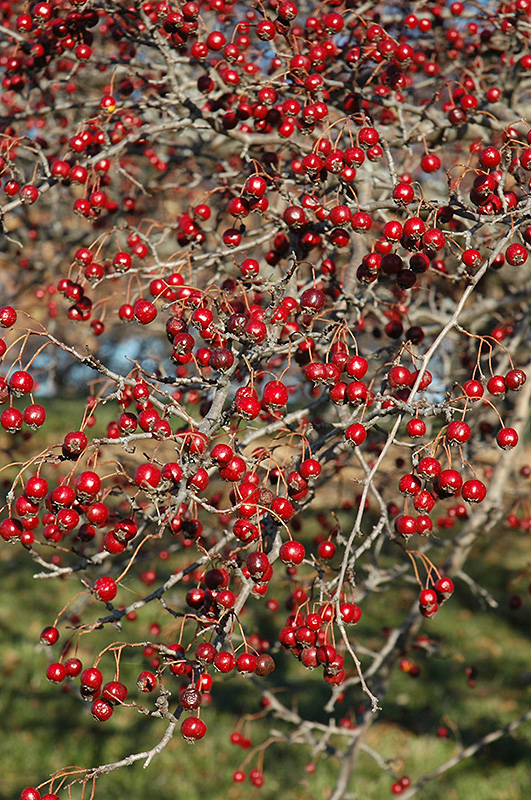Height: 20 feet
Spread: 20 feet
Sunlight:
![]()
Hardiness Zone: 3b
Description:
A relatively uncommon small tree that's developing quite a fan base with gardeners; prolific white blooms appear in spring atop the foliage, as if the entire plant was covered in snow, followed by showy red berries through late fall
Ornamental Features
Russian Hawthorn is bathed in stunning clusters of white flowers held atop the branches in mid spring. The fruits are showy crimson pomes carried in abundance from early to late fall. The fruit can be messy if allowed to drop on the lawn or walkways, and may require occasional clean-up. It has green deciduous foliage. The serrated oval leaves do not develop any appreciable fall color.
Landscape Attributes
Russian Hawthorn is a deciduous tree with a stunning habit of growth which features almost oriental horizontally-tiered branches. Its relatively fine texture sets it apart from other landscape plants with less refined foliage.
This tree will require occasional maintenance and upkeep, and is best pruned in late winter once the threat of extreme cold has passed. Gardeners should be aware of the following characteristic(s) that may warrant special consideration;
- Spiny
Russian Hawthorn is recommended for the following landscape applications;
- Accent
Planting & Growing
Russian Hawthorn will grow to be about 20 feet tall at maturity, with a spread of 20 feet. It has a low canopy with a typical clearance of 2 feet from the ground, and is suitable for planting under power lines. It grows at a slow rate, and under ideal conditions can be expected to live for 50 years or more.
This tree should only be grown in full sunlight. It is very adaptable to both dry and moist growing conditions, but will not tolerate any standing water. It is not particular as to soil type, but has a definite preference for alkaline soils. It is highly tolerant of urban pollution and will even thrive in inner city environments. This species is not originally from North America.



